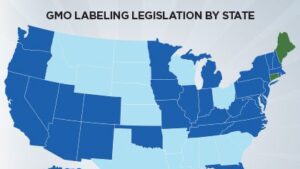According to the Non-GMO Project’s website, more than 3,000 brands have labeled more than 43,000 products with its non-GMO label. Additional products are labeled with generic non-GMO statements in product categories ranging from food to pet products.
Across the Corn Belt, millers, dairies and grain buyers are looking for Non-GMO corn to meet consumer demand. This growing non-GMO market has many seed companies wondering how they can take advantage it. Below are three steps to ensure your company can supply seed corn for non-GMO opportunities.
1. Determine the Allowable GMO Presence.
Not all non-GMO corn buyers have the same allowance for GMO presence. I’ve seen a wide range from 0.1 to 3 percent. The allowable percentage in grain impacts the allowable percentage in the seed a farmer will buy. If a farmer needs to meet a 2 percent GMO allowance, he or she will likely want seed with even less GMO presence, for example 1 percent. Knowing the GMO presence level the farmer will accept helps inform the rest of your seed supply chain.
2. Communicate the Allowance to Genetic Suppliers.
There is no practical way to produce hybrid seed corn that has a lower GMO presence than the parent seed, so this is a critical step. To meet the 1 percent allowance in seed referenced above, the parent seed should be 0.5 percent or lower. Before you select hybrids for a high-purity, non-GMO market, make sure the genetic supplier has parent seed with the proper GMO presence.
3. Communicate the Allowance to Seed Producer.
Once you’ve determined the allowance for GMO presence and have confirmed the proper parent seed is available, make sure your producer knows the targeted allowance. At Gro Alliance, we produce seed from 0.1 percent GMO and up. High-purity, non-GMO seed requires isolation distances of up to 1,320 feet from GMO corn. This takes significant planning and coordination with neighboring farmers. Furthermore, we condition and package all the high-purity, non-GMO seed (0.1, 0.5 percent) at our dedicated non-GMO/organic seed conditioning facility in Cuba City, Wisconsin. The combination of well isolated field production and dedicated non-GMO seed conditioning and packaging requires advanced planning, so knowing the GMO allowance at production planning is critical for success.
The non-GMO market is growing and can provide higher margins. However, there is risk of non-acceptance if the steps above aren’t followed. To give your company the best chance at success, make sure your entire supply chain understands, and can meet, the GMO presence allowance. This transparent communication will ensure your company can take advantage of this growing market









